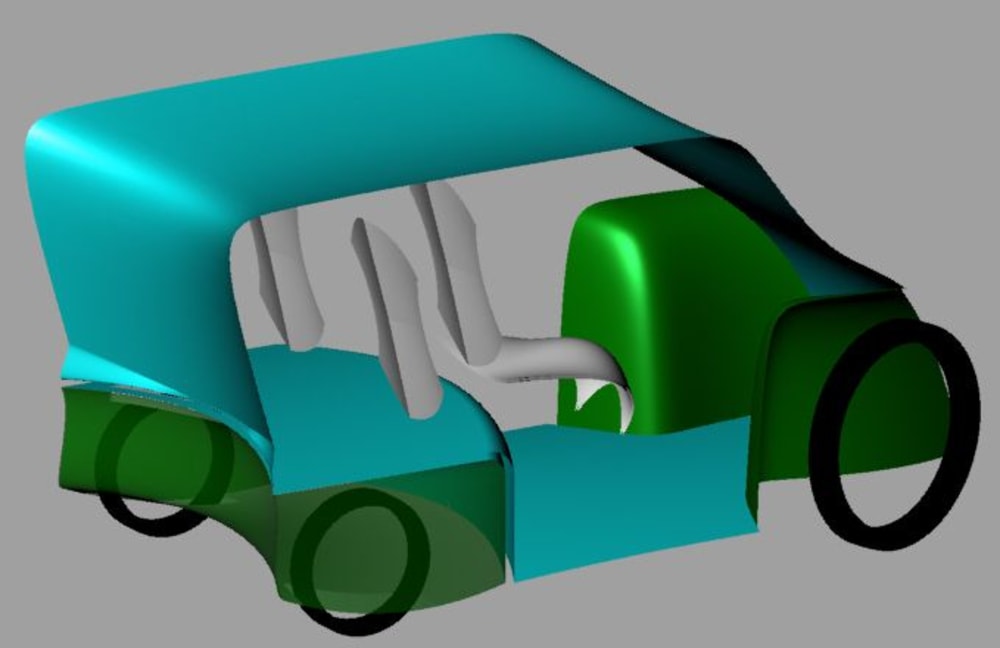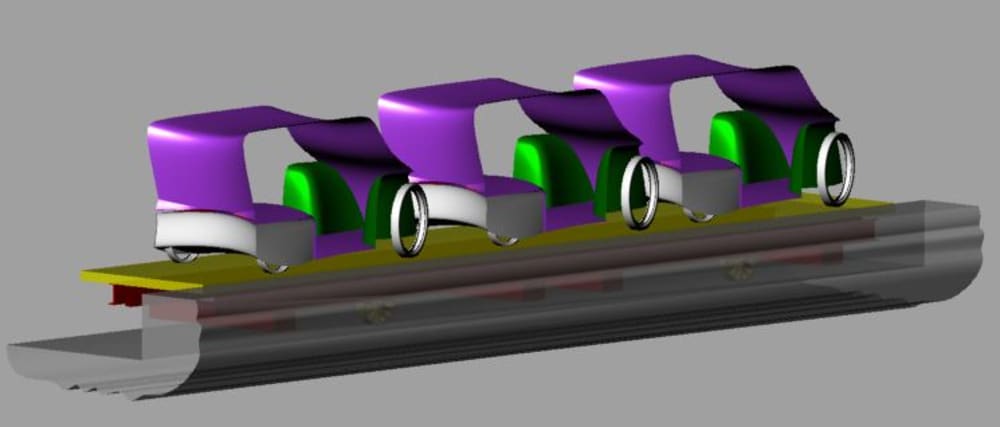Introduction: A limiting factor in the use of mass transit is that rail stops are seldom close to the starting point (one's home) or the destination (work, etc.) . Parking garages fill and adequate transport is not available from the nearest stop to the final destination.
Many people like having their own space and not touching the same seats occupied by the masses. They like being able to store personal effects. The golf cart solution is not ideal for long distances because it cannot traverse high speed traffic arteries and many cities are poorly connected by low speed surface streets.
Buses do not synchronize with the mass transit. Having to transfer to a bus causes delay and another chance to lose things. The bus must make frequent stops and often disrupts traffic. When not packed, buses often run around near empty in an attempt to keep an arbitrary schedule.
The cost of constructing a metro system that connects all points of a metropolitan area is high. Combined metro-rail and bus lines often leave people with long waits, long walks and exposure to inclement weather. The elderly are not able to walk long distances and are a danger to all when forced to drive at high speeds on expressways.
The proposed fix: Battery powered low speed personal transportation as an integral part of mass transit.
As a business model, batteries would be leased. Charging could be at the rail stations.
Independent rail cars would not stop at all stations. Dedicated pedestrian an "pod" cars would share the same rails. Switching should be controlled from the cars.
Bypass rail cars could be interspersed with depot bound cars without danger.
The first step would let steel wheels drop to the low side. A flanged rail would then pull the inside wheels away from the bypass rail, at which point flange-less wheels outside the bend would be pulled to pass flush over the inner bypass rail. After the initial drop, the depot bound rail car would climb to loose speed. Traction motors in the station would stop the car at its designated siding.
Departing rail cars merge into an open spaces between bypass cars. No switch logic would exist. The only choice is that the entering rail car pick up the main tracks. Slope and camber could be used to enforce that the departing cars merge with the main track.
Controls philosophy: Use of individual and smaller rail cars should allow customers to interact with the schedule. Each car will be continuously communicating its location, future plans and speed of travel. A demand algorithm would be used to put cars into circulation or store them at strategically located sidings. As such there will be no schedule, merely an operational commitment to never cause more than a 10 minute wait. Rail cars would skip needless stops.
Like this entry?
-
About the Entrant
- Name:Jeffrey Tischler
- Type of entry:individual
- Hardware used for this entry:PCSoftware used for this entry:Rhino3D
- Patent status:none





